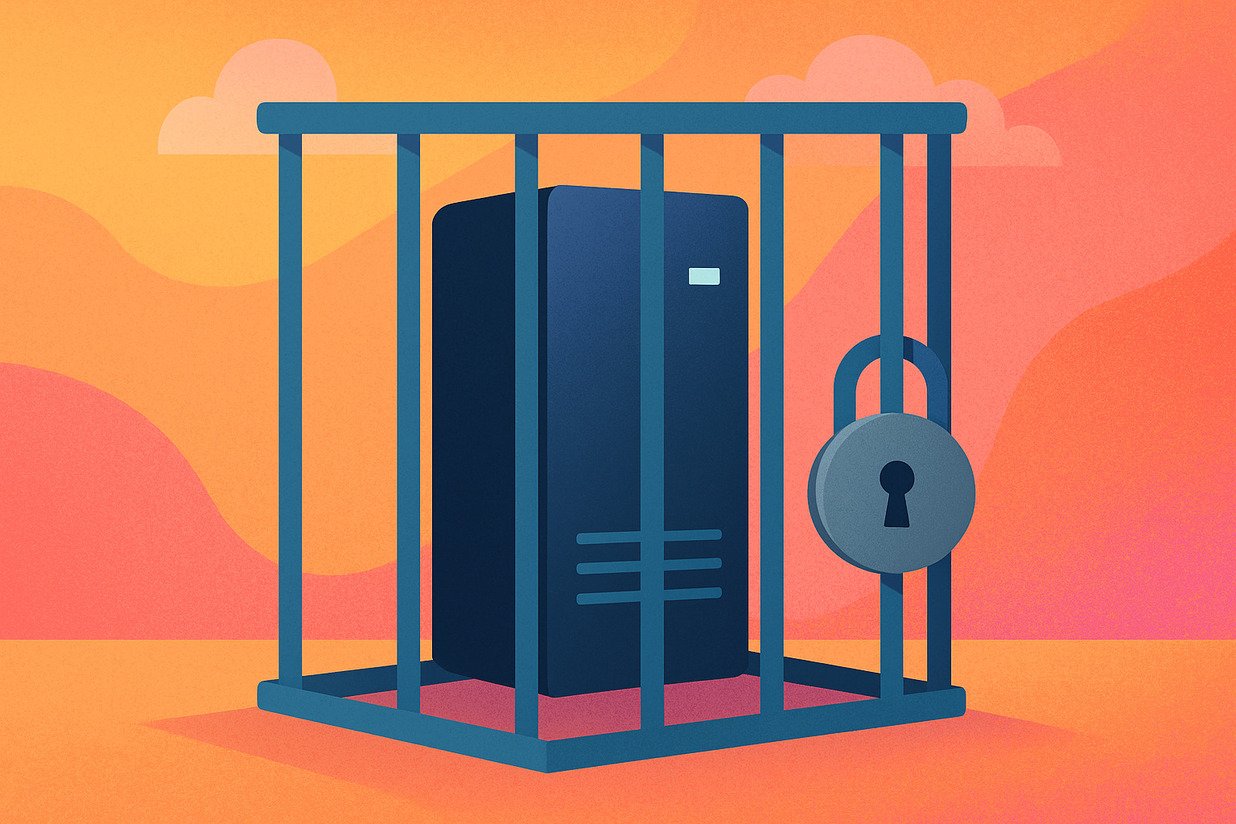Why Application Isolation Matters in FreeBSD
Maintaining a secure and well-organized system is crucial, especially for servers handling multiple applications. Isolating Applications with FreeBSD Jails offers a powerful method for keeping applications separated and secure. For system administrators and developers, having a separate environment for each application improves security and ensures better resource management.
Application isolation means that even if one application encounters problems, it does not affect others. In production environments, where downtime equals financial loss, this level of control becomes essential. Many companies rely on FreeBSD Jails because it provides a container-like environment that is stable and easy to manage.
Even for personal projects, Jails offer significant benefits. You can experiment with new applications without risking the entire system. It acts as a safe sandbox that you can easily reset if needed, and Isolating Applications with FreeBSD Jails makes this process efficient and reliable.
What Are FreeBSD Jails and How Do They Work?
FreeBSD Jails are a feature of the FreeBSD operating system that provide isolated operating environments within a single host system. Each jail behaves like a mini FreeBSD system with its own file system, network configuration, and processes.
This is not full virtualization. Jails share the host kernel, making them lighter compared to full virtual machines. However, the isolation they provide is enough to prevent one jail from directly affecting another or the host system.
Developers praise FreeBSD Jails for their simple yet effective design. Isolating Applications with FreeBSD Jails has become a preferred approach because it requires minimal resources and is easy to deploy, whether on small systems or large-scale servers.
Benefits of Isolating Applications
One of the main benefits of FreeBSD Jails is security segmentation. If an application gets compromised by malware or a bug, other applications and the host remain safe. This setup is ideal for web servers hosting multiple sites or services.
Management also becomes easier. You can restart, update, or configure a single jail without stopping other services. In production systems where downtime must be minimized, this capability is extremely valuable.
Resource allocation also improves. Each jail can have limits on CPU and memory usage, making application performance more predictable and preventing resource hogging. For administrators managing critical workloads, Isolating Applications with FreeBSD Jails helps maintain consistent performance while keeping systems secure.
Preparing the Environment for FreeBSD Jails
Before creating a jail, you need to prepare the base system. Keep your FreeBSD installation updated and ensure proper network configuration to avoid compatibility issues.
It is recommended to allocate a separate directory for each jail. Most administrators store jails in the /usr/jails directory to maintain an organized structure.
Base system components, such as libraries and essential tools, can be shared among jails to save disk space. However, for full isolation, you can set up dedicated copies for each jail.
Creating Your First Jail
Once the environment is ready, you can create your first jail. Use built-in FreeBSD tools such as ezjail or the jail command for faster setup. Each jail requires its own hostname, IP address, and root directory.
For example, if you want to run a separate web server, assign a dedicated IP address and configure the web service inside the jail. Although the host and the jail share the same operating system, their processes and configuration files remain isolated.
Proper permission settings are crucial. The root user inside a jail has no control over the host system, adding an extra layer of security in case of breaches.
Managing Multiple Jails
In large deployments, dozens of jails may run on a single host. Proper management through automation tools becomes essential in such setups.
The ezjail tool is one of the most popular choices for managing multiple jails. It simplifies cloning the base system, updating all jails simultaneously, and monitoring their status.
Some administrators also use custom scripts for advanced automation. This approach ensures system stability and consistent performance even with many jails running at once.
Security and Patching Inside Jails
Updating security patches inside jails is as important as maintaining the host system. Treat each jail like an independent server.
Regular audits and timely updates help prevent vulnerabilities. Because jails are isolated, you can update one without affecting the others.
For sensitive data, you can add extra security measures such as restricted user access and encrypted storage. These steps provide additional protection for critical applications.
Performance Considerations When Using Jails
Although FreeBSD Jails are lightweight compared to full virtualization, monitoring resource usage remains important. Running too many jails on a single host can still cause performance degradation.
Proper resource allocation is key. Tools like rctl can limit CPU and memory usage per jail, ensuring that no single application starves others of resources.
For systems with high-performance requirements, consider dedicating hardware or optimizing each jail’s configuration to achieve better overall performance.
Using Jails for Testing and Development
FreeBSD Jails are perfect for testing and development environments. You can set up isolated environments for new applications without affecting the production system.
For instance, you can clone a jail, install an application update, and test it before rolling it out to live servers. If something goes wrong, you can easily delete or reset the jail.
For developers, having isolated environments speeds up workflows. There’s no need to set up full virtual machines for every testing scenario.
Expanding the Capabilities of FreeBSD Jails
Advanced users often combine FreeBSD Jails with other tools to unlock additional functionality. Integrating it with ZFS enables snapshotting and rollback features, which are useful in both production and testing environments.
Automation tools like Ansible simplify deploying multiple jails across different servers, which is especially helpful in large infrastructures hosting hundreds of applications.
With the right setup, FreeBSD Jails become more than just an isolation tool—they become a vital part of modern system administration and development practices.
FreeBSD Jails as a Strong Solution for Application Isolation
FreeBSD Jails have proven to be an effective way to isolate applications, ensuring safer and more organized systems. From personal projects to large production servers, they provide flexibility and control rarely found in other systems.
For developers, system administrators, and security-focused users, using Jails offers confidence that even if one part of the system encounters problems, the rest remains stable.
As applications and services continue to grow, reliable isolation tools remain essential. Isolating Applications with FreeBSD Jails demonstrates that sometimes, a simple and well-designed system is the most effective way to maintain security and stability in any environment.










No Responses